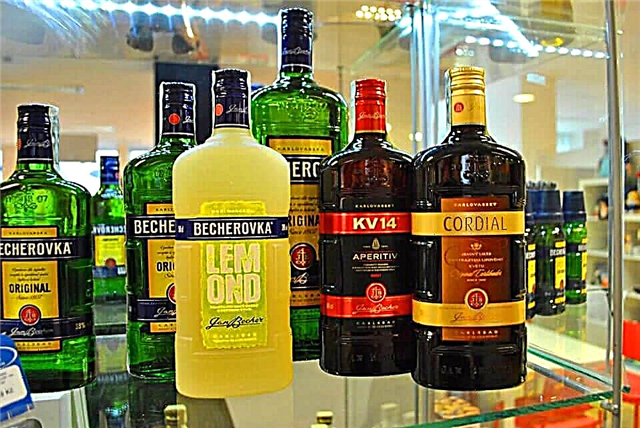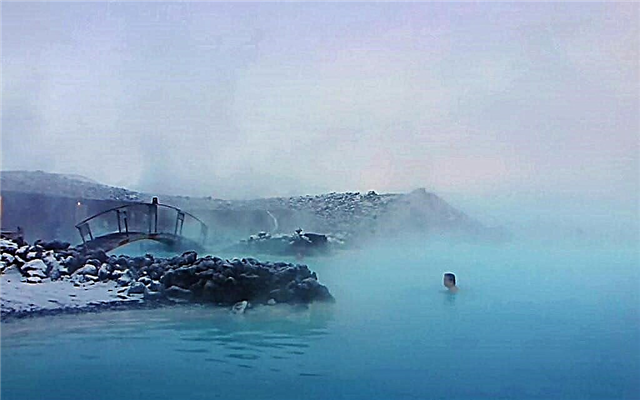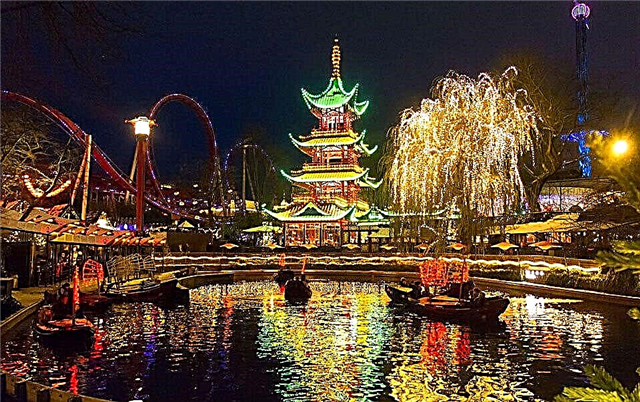Address: Great Britain, London, Westminster district
Start of construction: 1840 year
Completion of construction: 1843 year
Coordinates: 51 ° 30'28.7 "N 0 ° 07'40.9" W
Content:
If you are going to visit London - a majestic city where the spirit of the real English aristocracy is still alive, then you have a difficult choice. After all, to visit London and not see its sights is like walking through the Tretyakov Gallery blindfolded.

Bird's-eye view of the area
But which of its many monuments and historical sites are worth seeing first? Options that immediately spring to mind are Tower Bridge, Big Ben, Buckingham Palace and the London Eye. But believe me, there is still a lot of interesting and beautiful things in the capital of Great Britain! Trafalgar Square is a vivid confirmation of this. And don't think that the square is boring!
Today Trafalgar Square is the main square of the English capital. This is the place where the most magnificent and important state events are held. In addition, this square is the geographic center of the city and the convergence point of all the major streets of Westminster - the Strand, Whitehall and Mall. It is from here that the length of the country's main roads begins. Trafalgar Square is the true heart of England, the most important crossroads not only of its roads, but also of events of social and political life.
The history of the emergence of Trafalgar Square
Walking on the slabs of Trafalgar Square these days, among the crowd of people and doves busily scurrying underfoot, it is difficult to believe that this was not always the case. But the fact, there is a fact - the main square of London appeared in the capital of Great Britain not so long ago, just at the beginning of the 19th century.

Left to right: National Gallery, St Martin's Church, Nelson's Column
Until that time, in its place were ... the royal stables! After their demolition, an impartial wasteland was formed, which needed to be built up as soon as possible. Architect John Nash proposed a project to the city authorities - to build a large square here, where it would be possible to hold meetings and organize city holidays.
His plan was approved, and in 1843 a new square appeared in the center of the city. However, Nash was no longer destined to see this. After his death, the completion of construction work was supervised by another architect, Charles Berry. The square was first named after William IV, the oldest king in British history, who came to the throne at the age of 64.
After some time, it was renamed in honor of the British victory in the famous Battle of Trafalgar. Recall that the brilliant triumph of the British fleet took place in 1805. In the naval battle near Cape Trafalgar, England sank two dozen Spanish and French warships, while managing not to lose a single one of its own.
Admiral Nelson, generals and lions in the square
The main architectural attraction of Trafalgar Square is the column of Admiral Horatio Nelson. A giant monument 44 m high (the height of a 17-storey building!) Stands exactly in the center of the square and is crowned with a statue of the commander, which is 5.5 m high. It was he who commanded the fleet that won a brilliant victory in the Battle of Trafalgar, and was mortally wounded in it.

View of the National Gallery
Nelson's Column is a beautiful architectural monument. It is made of gray granite and decorated with bronze frescoes and floral ornaments, which were cast from melted battle trophies - Napoleon's cannons. The frescoes attached to all four sides of the pedestal of the column deserve special attention. They depict the largest battles in which Admiral Nelson took part. The column is surrounded by beautiful fountains and four bronze figures of lions (the lion is a symbol of the British monarchy).
Large pedestals can be seen in the corners of Trafalgar Square. There are four of them, one for each corner. According to the plan of the architect Charles Berry, they were supposed to erect monuments to other, no less outstanding British. His plan was brought to life, but not completely.
A statue of King George IV was installed on the first pedestal. It was during his reign that Great Britain fought bloody battles with the armies of Napoleon Bonaparte, which ended in the latter's defeat. George IV, during his lifetime, bought himself a place on this pedestal, paying an impressive sum of 9,000 guineas for those times.
The second and third pedestals were occupied by sculptures depicting two famous generals - Charles Napiru and Henry Havelock. These charismatic commanders acquired the fame of brave and skillful military leaders during the colonization of India.

St. Martin's Church
But with the fourth pedestal, things went wrong right away. For a long time it was empty, and only in 2005 the first monument appeared on it. It was a sculpture depicting the artist Alison Lapper. Alison was born without arms, but this did not stop her from becoming a recognized master of the brush. Today this beautiful woman has become for the British a symbol of the endless possibilities of the human spirit.
Later, other sculptures and installations were placed on this pedestal. For example, a huge transparent bottle with a mock-up of Admiral Nelson's flagship Victory, or a large blue rooster, located inside. However, most of the time the last pedestal in the square remains empty. More than a century has passed, but Londoners still cannot decide which of their compatriots is worthy of this honor.
Other attractions of Trafalgar Square
In addition to Nelson's Column rising to the sky and pedestals with statues in the corners of the square, there are many other equally interesting and beautiful things on it and nearby that are worth seeing. People interested in history will be curious to see the equestrian statue of the English King Charles I, located in the south of the square. The bronze monument depicts a monarch infamous for the civil war in which he was defeated and executed. It is noteworthy that earlier on the site of this monument was the Charing Cross, erected in memory of the wife of another English monarch - Edward I, Eleanor of Castile.

Nelson's Column
From the opposite side, the building of the National Gallery of London looks at Trafalgar Square. It would be unforgivable not to visit its spacious halls. After all, more than two thousand paintings by famous painters are presented in them in chronological order. These are Leonardo da Vinci, Raphael, Michelangelo, Rembrandt, Monet and others. The National Portrait Gallery located nearby is also very interesting, which contains portraits and sculptural images of English monarchs (and not only them).
The famous square also houses a snow-white temple dedicated to St. Martin (St. Martin-in-the-Fields). It is considered the most famous parish church in the city, because among its parishioners there are even the royal family! The interior of the temple is light, spacious and very solemn.
The road leading to Buckingham Palace starts from Trafalgar Square. On the way to it, very close to the square, there is the Admiralty Arch. It is a magnificently decorated structure that stretches from one side of the road to the other in a semicircle, which was erected in 1910. There are five openings in the arch. The central entrance is used exclusively for festive ceremonies. Two other large arches, to the left and right of the central one, are intended for the passage of cars, and the smallest at the edges are for pedestrians.

Admiral Nelson's ship "Victory" in a bottle on the square
There are many hotels, cafes and even several foreign embassies near Trafalgar Square.In addition, do not forget that the square is itself a giant arena, where various celebrations are often celebrated. Meetings and rallies, festivities and concerts are held here. Trafalgar Square is also a favorite place for New Years and Christmas. The Christmas tree for this purpose is specially brought from Norway and installed on the square, decorating with hundreds of white lights.
Pigeons in the central square of the city
Another special, and this time animated, local attraction is the pigeons. The nests of these birds, familiar to any city dweller, dot the slopes of the surrounding mountains. Therefore, it is not surprising that the pigeons moved to London and took a fancy to Trafalgar Square. It is probably no coincidence that there was a royal poultry house here before the stables!
Tourists who visited London were always happy to feed the pigeons. Many traders in the square sold bird food on purpose, knowing that compassionate tourists would buy it to treat the "feathered Londoners". Over time, there were so many blue doves on Trafalgar Square that on other days there was literally nowhere to step, because the number of birds in the square reached 35 thousand!

One of the four bronze lion figures surrounding Nelson's Column
Of course, this is an amazing sight, but it could not last long. Despite their beauty, birds often became carriers of dangerous diseases. And the costs of the London budget for cleaning their droppings from city monuments have reached tangible amounts, exceeding $ 150,000. Therefore, sellers of feed for pigeons were removed from the square, and bird feeding on it was banned since 2007, setting a fine for violation of this rule.
Today there are very few pigeons left here, but they are still there. Therefore, if you are in Trafalgar Square, do not feed them. Better just admire these touching, awkward birds.
So what is Trafalgar Square? We can say that this symbolic center of London is the personification of the national pride of the British for their famous invincible fleet and the embodiment of an indomitable fighting spirit. It is also just a beautiful and attractive place.











